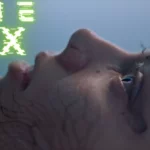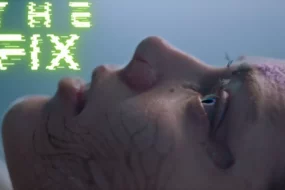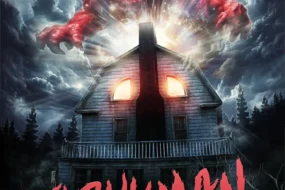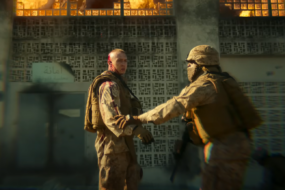
The Vourdalak, alternatively known as Le Vourdalak, represents the latest adaptation of Alexei Tolstoy’s 1839 novella “The Family of the Vourdalak.” This tale has seen several film adaptations, notably as the final segment in Mario Bava’s “Black Sabbath” and Giogio Ferroni’s “The Night of the Devils” in 1972, and more recently as “A Taste of Blood” by Argentinian director Santiago Fernández Calvete.
This time, French filmmakers director Adrien Beau (known for “Les Condiments Irréguliers” and “La Petite Sirène”) and co-writer Hadrien Bouvier take on the adaptation. The story opens with Marquis Jacques Antoine Saturnin d’Urfe (played by Kacey Mottet Klein) seeking shelter after a devastating attack. Initially turned away by the first house he approaches, he is directed to the Gorcha residence, where his journey truly begins.
En route, he encounters Sdenka (Ariane Labed), for whom he develops a fascination. In a comedic misunderstanding, he mistakes her cross-dressing brother Piotr (Vassili Scheider) for Sdenka herself, leading to an unexpected but fortuitous encounter with the Gorcha family. Among them are Jegor (Grégoire Colin), Anja (Claire Duburcq), and their son Vlad (Gabriel Pavie), who are pivotal to his quest.
The family patriarch is absent, having ventured out against invading Turks with a strict directive not to be let in if he returns after six days. Predictably, he does return late, now transformed into the vourdalak he warned them against. Adding to the eerie atmosphere, the vourdalak is portrayed not by an actor but by a life-size marionette crafted by Franck Limon-Duparcmeur and voiced by the director himself—a skeletal, pale figure that contrasts sharply with the powdered and somewhat clown-like appearance of the Marquis.
Shot on Super 16mm film by David Chizallet, “The Vourdalak” exudes a 1970s aesthetic with authentic grain, enhancing the film’s retro horror feel. Thibault Pinto’s set design amplifies the ominous aura within the family’s troubled home, akin to classic Eurohorror settings found in art theatres and late-night TV.
Unlike contemporary horror films reliant on jump scares, “The Vourdalak” embraces its gothic roots, focusing on atmosphere and ghoulish imagery to unsettle viewers. The undead patriarch’s manipulation of his family unfolds chillingly, occasionally punctuated by dark humor. Noteworthy performances, including Klein’s conflicted nobleman and Labed’s enigmatic presence, enrich the film’s unsettling narrative.
For aficionados of slow-burn horror and European cinema traditions, “The Vourdalak” promises a distinctive viewing experience, offering a departure from current genre trends. Oscilloscope Laboratories plans a theatrical release in the US on June 28th, followed by availability on Blu-ray, VOD, and digital platforms at a later date yet to be announced.






